
- For PC
- For MAC
- For Linux
- OS: Windows 10 (64 bit)
- Processor: Dual-Core 2.2 GHz
- Memory: 4GB
- Video Card: DirectX 11 level video card: AMD Radeon 77XX / NVIDIA GeForce GTX 660. The minimum supported resolution for the game is 720p.
- Network: Broadband Internet connection
- Hard Drive: 23.1 GB (Minimal client)
- OS: Windows 10/11 (64 bit)
- Processor: Intel Core i5 or Ryzen 5 3600 and better
- Memory: 16 GB and more
- Video Card: DirectX 11 level video card or higher and drivers: Nvidia GeForce 1060 and higher, Radeon RX 570 and higher
- Network: Broadband Internet connection
- Hard Drive: 75.9 GB (Full client)
- OS: Mac OS Big Sur 11.0 or newer
- Processor: Core i5, minimum 2.2GHz (Intel Xeon is not supported)
- Memory: 6 GB
- Video Card: Intel Iris Pro 5200 (Mac), or analog from AMD/Nvidia for Mac. Minimum supported resolution for the game is 720p with Metal support.
- Network: Broadband Internet connection
- Hard Drive: 22.1 GB (Minimal client)
- OS: Mac OS Big Sur 11.0 or newer
- Processor: Core i7 (Intel Xeon is not supported)
- Memory: 8 GB
- Video Card: Radeon Vega II or higher with Metal support.
- Network: Broadband Internet connection
- Hard Drive: 62.2 GB (Full client)
- OS: Most modern 64bit Linux distributions
- Processor: Dual-Core 2.4 GHz
- Memory: 4 GB
- Video Card: NVIDIA 660 with latest proprietary drivers (not older than 6 months) / similar AMD with latest proprietary drivers (not older than 6 months; the minimum supported resolution for the game is 720p) with Vulkan support.
- Network: Broadband Internet connection
- Hard Drive: 22.1 GB (Minimal client)
- OS: Ubuntu 20.04 64bit
- Processor: Intel Core i7
- Memory: 16 GB
- Video Card: NVIDIA 1060 with latest proprietary drivers (not older than 6 months) / similar AMD (Radeon RX 570) with latest proprietary drivers (not older than 6 months) with Vulkan support.
- Network: Broadband Internet connection
- Hard Drive: 62.2 GB (Full client)
There are all kinds of different War Thunder pilots, and each player has their own preferences in choosing vehicle classes and specific vehicles. In striving to meet the needs of all players, we’re trying to add vehicles of various classes and designs to the game. In update 1.59, one of the most significant serial production vehicles added to the game will be the legendary British four-engine bomber, the Handley Page Halifax B.III. This aircraft served with the Allied air force for almost the entirety of the war and has an impressive service record.
The design for this bomber began long before the beginning of World War II. The task to develop an aircraft that fulfilled the requirements began back in 1935, when the RAF sought a replacement for the series-produced Armstrong Whitworth A.W.38 Whitley. The new four-engine aircraft had to have a long range and was designed with a view to completing missions during the night. Initially, the maximum wingspan of the aircraft was limited to the traditional 100 ft (30.5 metres); British command placed this requirement on all aircraft of the time, in order to make them easier to transport and store in hangars.
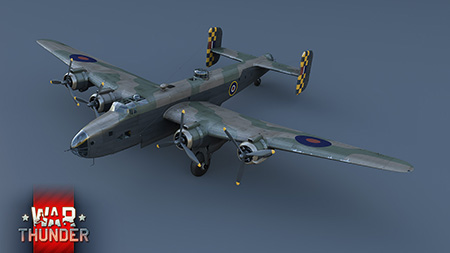 |
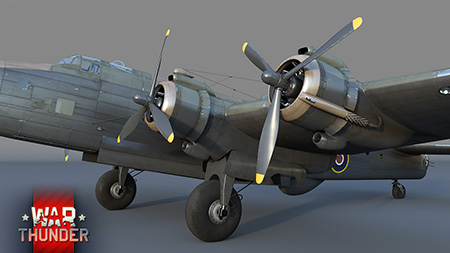 |
The first-series Halifax aircraft left the factory in 1940 where their first combat took place in 1941, when on the night of March the 10th, six aircraft flew to a port in Le Havre occupied by German troops. The Halifax III, which will be first to appear in our game in update 1.59, is the later and most mass-produced version of the aircraft, having been put into series production in 1943. Some of the key changes in comparison to the earlier versions are the air-cooled Bristol Hercules engine, increased defensive weaponry and improved aerodynamics: the Halifax B.III was cured of a common illness among bombers: poor durability leading to a spin when both engines on one side fail.
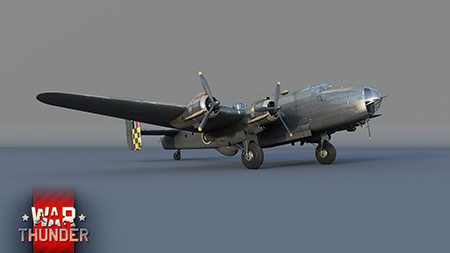 |
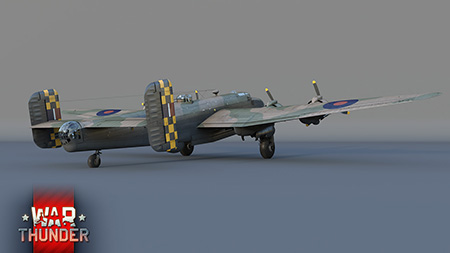 |
The Halifax’s bomb load is impressive: the aircraft can carry almost five tons of varying size bombs on its internal and external bomb mounts. With such a mass of bombs, the aircraft becomes a deciding factor on the battlefield, where victory often depends on the effective and timely destruction of enemy bases. Among the bomber’s weaknesses is its far from outstanding maximum speed – a little more than 280 mph (450 km/h) at a height of roughly 13100 ft (4000 m).
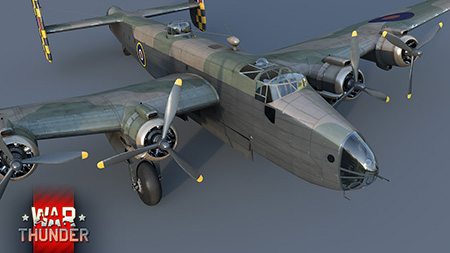 |
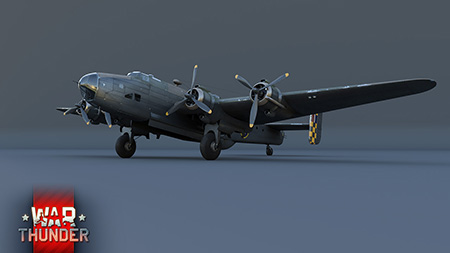 |
However, in exchange, even at rank II this aircraft has good survivability and powerful defensive weaponry provided by nine 7.7 mm Browning .303 machine guns. Four of them are housed in a rear turret (with an ammunition complement of 6800 shots), another four – in a fuselage turret (2400 shots) and one 7.7 mm Vickers K is mounted on the nose. The sole serious weakness in the aircraft’s defensive weaponry is its lack of lower turrets, which means that the player has to avoid exposing the underside of their aircraft to enemy fire by veering away.

Download Wallpaper :1280x1024 | 1920x1080 | 2560x1440
The Handley Page Halifax B.III will arrive in the game with update 1.59. Look out for this bomber in the virtual skies of War Thunder. See you on the battlefield!
Upcoming content for Update 1.59 "Flaming Arrows" :
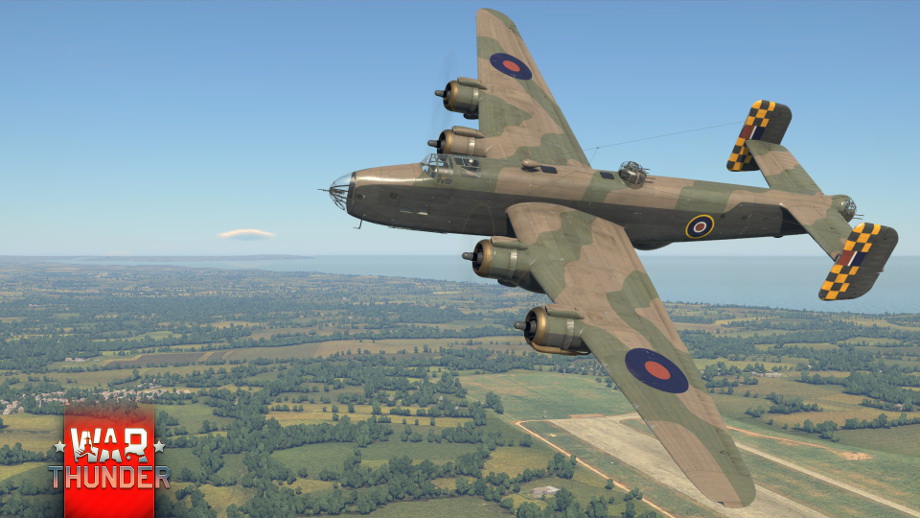




Comments (70)
Been looking forward to this for a while, Now we just need bomber variant of the Mosquito. ;)
Indeed! Mosquito MK IV and MK IX, MK XVI
BackToTheGround, My Great Grandfather worked for de Havilland and was on the design team for the Mossie, I can't wait for more variants to be released in the game.
Yay. Another useless target practice
yay. another wining kid named salty
I personally love the look of this plane and im going to try and get it but one thing... Have there EVER been any British bombers you could add that have good defensive armament? I mean the Russians are getting the Tu 4 with 23mms! Britain has 95% 7.7mm turrets... Maybe I'm wrong but I wont be surprised to be right. But good work guys, just add something a little more effective next in the British line? You know, something that can fight back?
Like what? The Brits chose night bombing over defensive armament.
well we do have the lancaster mk. III with the dual .50 tail turret. but I suppose that doesn't count because the the calibration of that turret got destroyed in one of the past updates. BUT! at least with the halifax it has 8 303s instead of six so it might stand a better chance.
A very nice addition. I'm assuming it's taking its' spot right after the Wellingtons? Also, I heard that it has some M2 Brownings as defensive armament in the rear turret. Is this true? Because if it is then this bomber already curb stomps the Wellington, Lancaster, and Stirling in terms of defensive armament.
"defensive weaponry provided by nine 7.7 mm Browning .303 machine guns" Can you read?
Lorofish, I can read perfectly well, thank you. I was just asking because that's what I saw in the DevServer and I'm hoping it carries over into the final patch release. British bombers need their defensive turrets beefed up so badly it's not even funny.
i saw this comming the moment they compacted the wellys into a single box dos this mean more British bombers soon
When is the update expected to come out?
we know list of vehicles, we are after dev server, I think this week, if we will see "maintenance" news on webpage ;)
Soon™
Please focus on adding aircraft like the Westland Whirlwind as a non-premium aircraft. Tech tree gaps need plugging. Please at least make sure that the Halifax will no be broken like the Lancaster (1 hit to the tail causes the Lancaster to backflip).
Will there be any American fighters in 1.59?
We already published sneak peak for 1.59 where you can find list of new vehicles ;)
Watch it be tier 3 going up against Fw-190s and Yak-9ts. It'll be just like the Stirling, a great addition yet NO ONE wants to fly it.
Maybe re-read DevBlog. There is information on which rank it will be...
i want to fly a plane like that
what is the bomload of this thing?
There is an information in this DevBlog, you simply need to read it ;)
Stona_WT, i am blind or i cant find it :D hihi
Submit a complaint